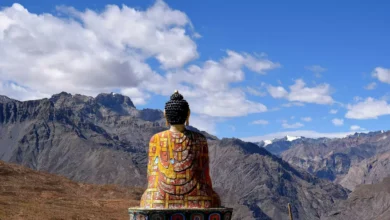Considering a Journey to Meerut? These Are The Top 6 Things To Keep In Mind
Six Items to Consider Before Traveling to Meerut
The ancient city of Meerut is situated between Delhi and Agra, along the gentle Ganges plains. It is a place where the first flames of the Revolt of 1857 engulfed India, initiating India’s iconic freedom milestone, which is sadly now largely overlooked by tourists flocking towards more gratifying destinations.

However, beyond the crumbling cantonment barracks close to haunted grounds where horrific massacres have occurred, there is a rich reservoir of heritage that spans millennia and is mentioned in Hindu scriptures and Mughal chronicles. This suggests that there was structural continuity between eras, which is still subtly evident in the architectural styles and cultural expressions that are vocalized through the shared Hindustani dialects infused with Urdu and Awadhi.
A fulfilling journey is undoubtedly in store while exploring Meerut’s less well-known historical aspects and getting to know the people who have been practicing their art or organizing religious rites since ancient times.
1. The subtropical climate of Meerut
Meerut, situated at 29 N and straddling the rich Indo-Gangetic plains in the center, has severe temperatures in the summer and winter, respectively, but is relieved by the rainy season.
While winter evenings make it difficult to go outside with bare skin since the temperature sometimes stays below 5 C, summers, which stretch from March to June, have temperatures that reach above 45 C and challenge physical stamina. Fortunately, the finest natural protection is offered by the woolen textures and embroidery created here.
Humidity between the middle of June and September concentrates monsoon rains into mild periods, while momentarily interfering with preparations for the outdoors and traffic patterns. Fortunately, fresh mangoes from nearby orchards enhance the taste.
2. Arriving at Historic Meerut
Located about 70 km from Delhi, the nation’s capital, Meerut is well linked to main transportation networks. It takes about an hour to get there by large, well-paved expressways, yet, given the growth of regional infrastructure, access points are periodically clogged by bottlenecks. Those attending the three-day Meerut Festival must make reservations for housing well in advance.
3. Getting to Meerut: IGI Delhi is the closest airport; scheduled taxis arrive in less than 1.5 hours.
Garhi Train Station Connects a Number of State Cities
Road Transportation: Effectively accessible private cabs and interstate coaches
Affordable Inter-City Transportation with RTV/Shatabdi Buses and Auto-rickshaws
4. The Historical Context of Spirituality
Indians revolted against the British East India rule on May 10, 1857, starting late in the afternoon from Meerut Cantonment with ferocious public demonstrations. The city is also mentioned in previous myths. Due to its proximity to Delhi, the capital of India, just 70 km away, and its present relative undervaluation, Duryodhana is a destination with great potential for cultural tourism. Some believe it was the site of the construction of its ancient temples, while others see it as the birthplace of Ravan, who came from Lanka.
Its Vedic-era Mangladevi temple, which has been a center of Goddess Shakti devotion for a millennium, is mentioned in ancient Hindu texts.
The magnificent Ghurid architectural facade of the historic 14th-century Jama Masjid continues to dominate the city skyline after more than 700 years.
St. John’s Church and the British Cemetery physically suggest continuance rather than sudden displacement across periods.
5. Customized Artisanship
Beyond the typical curio buying, Meerut offers fascination via specialized crafts that have flourished since the medieval period, when landowners and royal courts competed to serve aristocratic imperial tastes with expertly woven regional textiles that were shipped worldwide via medieval trade routes throughout north Indian heartlands.
Shekhavati fashion Phulkari interweaving oral histories across generations via vivid floral weaves
Beautifully carved wood creating elaborate entrances and balconies honoring the Shilpkar ancestry
Splintering looms maintaining age-old bandhani block prints to satisfy the tastes of the nouveau riche.
6. Gastronomic Treasures
Here, food is a fundamental component of cultural identity, with seasonal specialties prepared in the Awadhi style, which has been refined through years of patronizing practice. Whether it’s succulent paneer tikkas, succulent biryani, or decadently creamy kulfi kesari, cultural continuity always comes through, even as generations change. Allow yourself to be tempted.
Hopefully, learning about the comparatively undiscovered aspects of the 1857 event will pique your interest sufficiently to lead to personally rewarding discoveries in the future.






